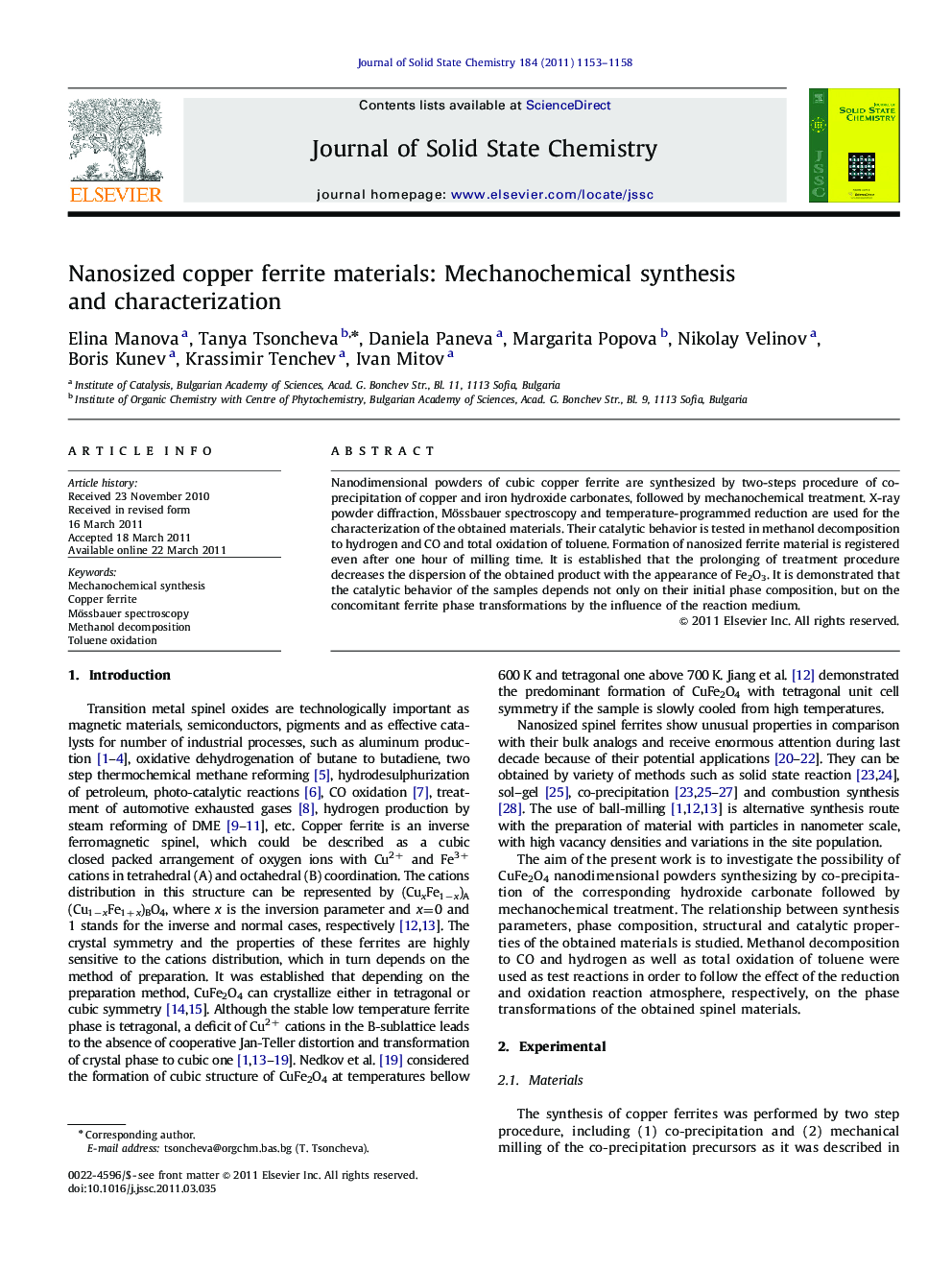| Article ID | Journal | Published Year | Pages | File Type |
|---|---|---|---|---|
| 1330829 | Journal of Solid State Chemistry | 2011 | 6 Pages |
Nanodimensional powders of cubic copper ferrite are synthesized by two-steps procedure of co-precipitation of copper and iron hydroxide carbonates, followed by mechanochemical treatment. X-ray powder diffraction, Mössbauer spectroscopy and temperature-programmed reduction are used for the characterization of the obtained materials. Their catalytic behavior is tested in methanol decomposition to hydrogen and CO and total oxidation of toluene. Formation of nanosized ferrite material is registered even after one hour of milling time. It is established that the prolonging of treatment procedure decreases the dispersion of the obtained product with the appearance of Fe2O3. It is demonstrated that the catalytic behavior of the samples depends not only on their initial phase composition, but on the concomitant ferrite phase transformations by the influence of the reaction medium.
Graphical abstractIt is demonstrated that the catalytic behavior of the obtained copper ferrites depends not only on their initial phase composition, but on the concomitant phase transformations by the influence of the reaction medium.Figure optionsDownload full-size imageDownload as PowerPoint slideHighlights► Two-step co-precipitation–ball-milling procedure for copper ferrites preparation. ► The phase composition of ferrites depends on the milling duration. ► Ferrites transforms under the reaction medium, which affects their catalytic behavior. ► Ferrites decompose to magnetite and carbides during methanol decomposition. ► Agglomeration and further crystallization of ferrite occur during toluene oxidation.
